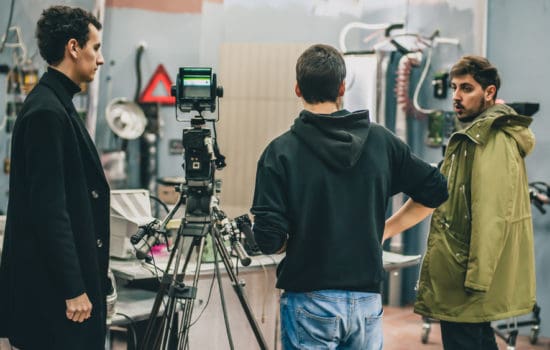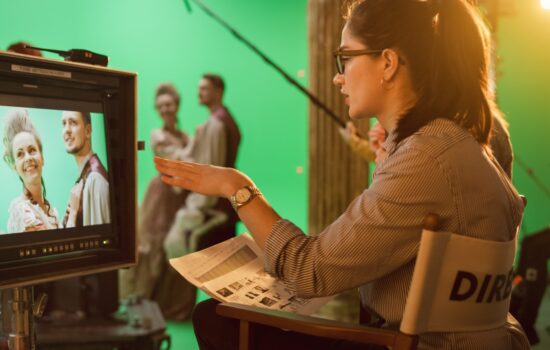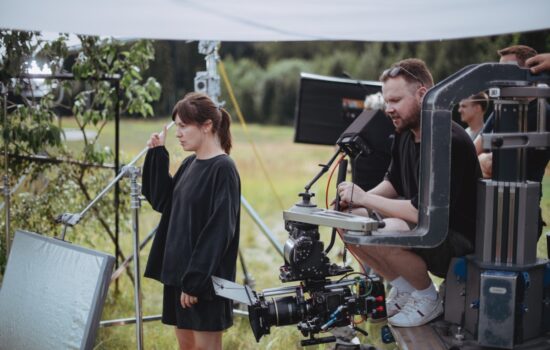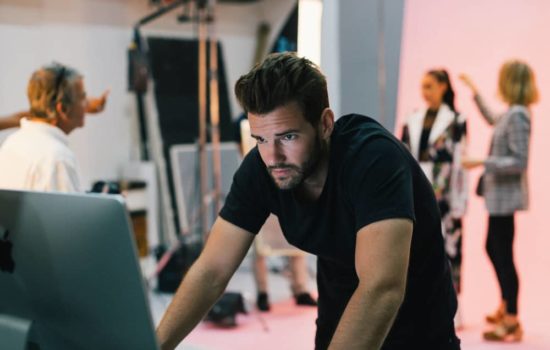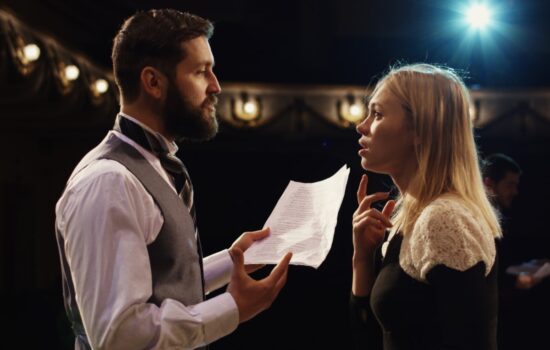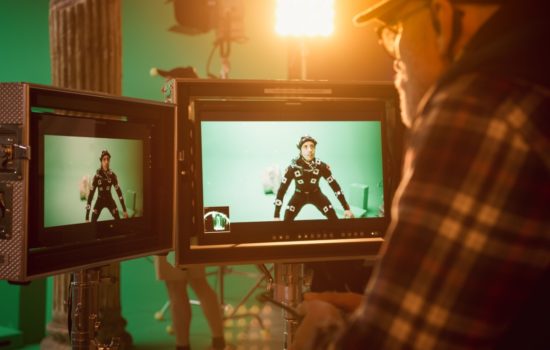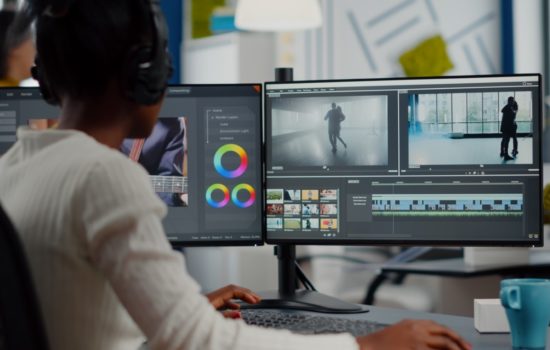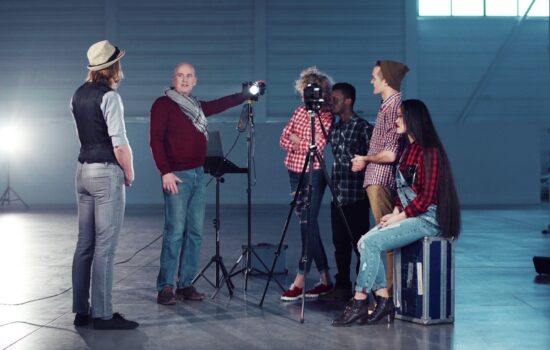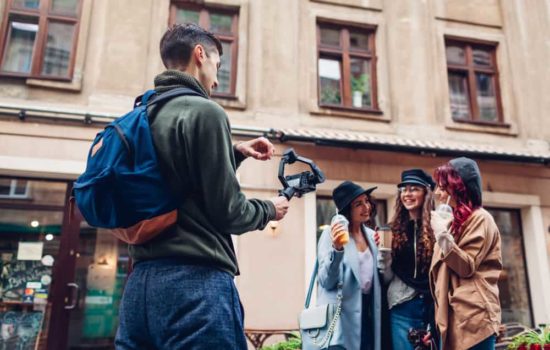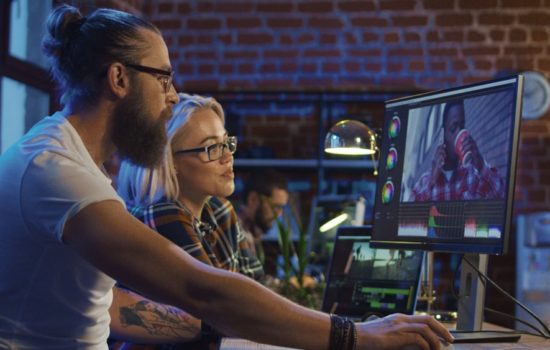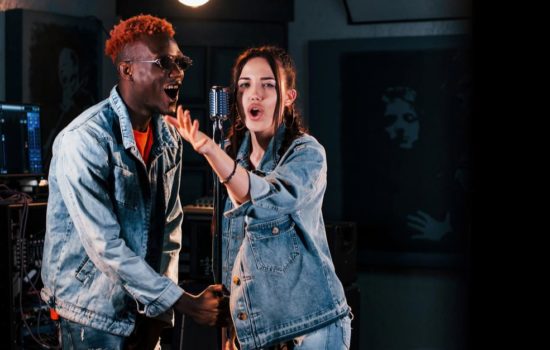Visual Effects Supervisor
Career Overview
Visual Effects Supervisors are present on set when a film or television show is being shot. They advise on how to go about shooting something to make it easy to handle in post-production. With good on-set supervision, the footage will look its very best once the computer graphics and compositing are added.
Alternate Titles
On Set VFX Supervisor, VFX Super
Avg. Salary
$140,5022
Salary Range
$59K – $225K2
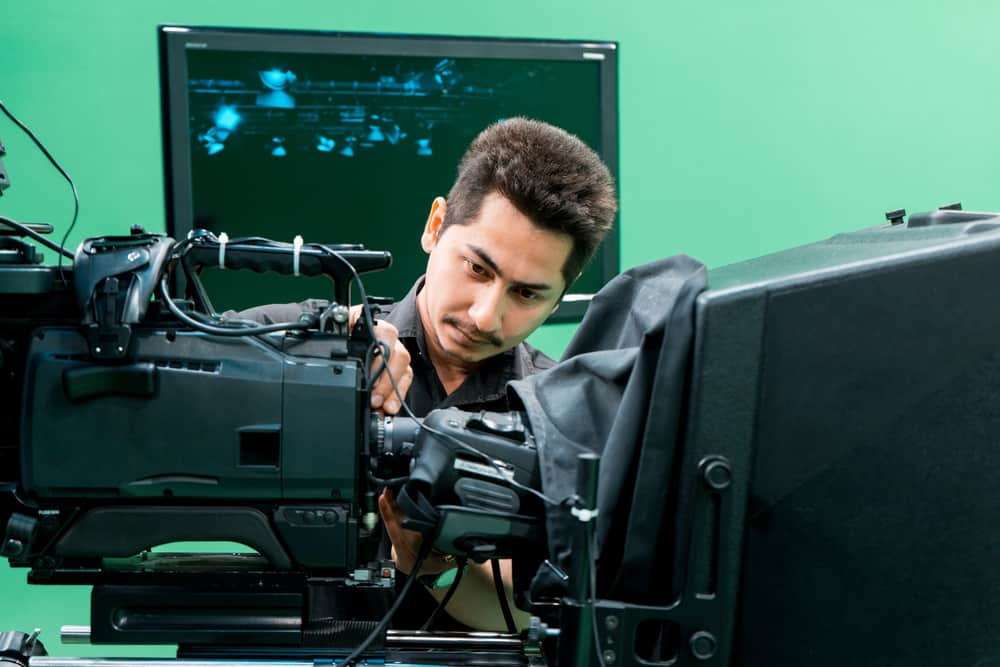
How To Become a Visual Effects Supervisor
People also ask
Career Description
Kevin VanHook, a veteran Visual Effects Supervisor who has worked on shows and films such as I, Robot and Rizzoli & Isles, describes his job as an “advisory role”: “It varies in terms of how much control I have.”
“Sometimes I’m asked to take over and shoot something in a directing capacity, other times I’m asked to advise a Director on what they should do in order to shoot something most effectively. It depends entirely on the comfort level of the Director or Producer.”
“Ultimately, I’m not there to tell anyone creatively how to shoot their movie or show — I’m there to serve their vision to get them what they want at the other end.”
VanHook’s duties are many, and he shares a few of his common responsibilities: “My purview ranges widely. Something I do a lot is ensure there’s not too much ‘green spill’ or ‘bounce.’ When you shoot against a green screen, you don’t want light to bounce off it and bathe the rest of the scene in green.
If that happens, it makes it very difficult to do after effects because we would constantly be punching holes in the areas of green we don’t actually want to touch.
“Another element I advise on often is skylines. I supervised on four seasons of Rizzoli & Isles, a show that was supposed to be set in Boston. The problem was we were shooting either on the Paramount lot or on location in Los Angeles so, in post-production, we were constantly doing skyline enhancements. If you’re putting in a skyline in post, you really don’t want to be adding it behind telephone lines and difficult obstacles like that.”
“So I work with the Director to identify a line, say the top of a building, that helps to hide where reality ends and fiction begins. We’re always trying to find natural and useful dividing lines to put in front of what we’ll add in post.”
VanHook goes into some of his practical, day-to-day: “We used to have to encourage static shots but, these days, tracking shots are far less problematic than they used to be — we can solve moving cameras in the post environment very easily. The software is incredible; combined with experience, it’s amazing what we can do.
“The only challenge is zooming mid-shot; that becomes difficult in post. Really, like anything, it’s best to sit down and lay out a good plan before shooting — you can deviate from it if you need to, but it’s best not to make it up as you go along!”
Typically, VanHook records data from the shoot to have on hand for later. He notes down the kind of lens used, min/max focus, the camera height, the kind of tilt or pan, rotational information, or whether the camera was on a dolly or jib. He goes further:
“I may also capture the light conditions with matte/shiny balls to get a sense of what the light is doing and how it lands on those surfaces. Those kinds of things are important to me once we’re in post.”
“On bigger projects, the Camera Assistant records all this and hands it to the Script Supervisor, but I like to take it down myself. I’ll also stand at the monitor and shoot the shots with my iPhone so that I have instant playback. Oddly, it typically means I have the fastest playback on set so I have Producers watching my footage over my shoulder!”
VanHook is a multi-faceted Supervisor and his skills allow him to follow the work beyond the shoot: “After the shoot, I actually take it through the full post-production process because I’m also a VFX Artist and often do the actual work, painting the background or compositing.
“Compositing is where we take two or more elements and put them together; that might be something shot on the day married up with a CGI vehicle in post. Not all On Set VFX Supervisors have these comprehensive skillsets, so I’m lucky.”
VanHook explains that his involvement isn’t constant during a season: “On Rizzoli, or Law and Order, my on-set supervision was more occasional until the final seasons. Typically, I’m brought in for the ‘big’ days when there’s something we’re going to need to add and they want to make sure they get it right so it doesn’t get tough in post.
“In television, a Post Production Supervisor normally oversees my work, whereas on feature films I work more closely with the Director. The reason for this is television shows are run more by Writer/Producer/Showrunners and the Directors are usually for-hire. I don’t work quite as closely with them after filming because they tend to move on once the shoot is wrapped.”
VanHook shares that his biggest challenge is having Directors who don’t want to listen to his advice but, he says, “That doesn’t happen too often. Ultimately, it’ll bite you in post-production and you won’t be able to use a lot of what you shot if you don’t do it correctly on the day.
“More experienced Directors typically welcome the advice, but younger Directors or Second Unit Directors can view it as a threat if they are a little insecure. But it’s rare — the vast majority of people are decent and they listen. Normally, we end up working together very smoothly and you end up developing a lovely shorthand with many Directors and Producers.”
What does a Visual Effects Supervisor do?
A Visual Effects Supervisor oversees all VFX needs for a production. For this reason, they often onboard a project during pre-production. They will provide their expertise on how to best execute the shots that will require visual effects and stay on through post-production to ensure that those shots are completed as needed.
Salary
The average annual salary for a Visual Effects Supervisor is approximately $140,500. The salary range for Visual Effects Supervisors runs from $59,000 to $225,000.
On Set VFX Supervisors are non-union freelancers so any work on a series or feature will involve a negotiated rate. Due to the specialized nature of the work and the technical artistry needed, earnings can be very healthy but, as with many jobs in the entertainment industry, your earnings are entirely dependent on the regularity of your work. Be prepared for periods of time where you are not in full-time employment.
How much does a VFX Supervisor get paid?
According to Glassdoor, the average annual salary for a VFX Supervisor is just under $80,000. This figure can change according to any number of factors. For instance, someone working on a film with a high volume of visual effects, such as a superhero movie, will likely be paid more because of the demands of the job. Individuals who book these types of gigs generally have more expertise, which can also increase their salary. Shorter or lesser demanding jobs, though, may allow VFX Supervisors to work more gigs in a given year. A higher volume of work in a given year can also increase their overall salary even if each individual one pays modestly.
Hey, what do you think about trying our new Film Career HelperFilm Career Helper really quick? It’s totally free and could help get your career moving fast! Give it a try. It’s totally free and you have nothing to lose.
Career Outlook
“As an artist, I tend to work until I’m too beat to go on so it’s tough,” explains VanHook. “I’m most balanced when I work on a TV series because I know the schedule. If the episode is going to air in two weeks, I know we won’t be working on it any longer than that. On features, you can do multiple passes and it can go on forever!”
VanHook has some suggestions to help restore a healthy work/life balance: “I always try to work four days and take a day off. I do road trips and take time away. I do think it’s important. I still occasionally write a comic book, or draw, or work on a screenplay so I intentionally plan my schedule to make sure I have time for those. Those creative pursuits are very fulfilling.”
What is most important for Visual Effects Supervisors?
Visual Effects Supervisors must have a comprehensive understanding of both cinematography and computer imagery and effects. Often, they will start off their careers in post-productions as VFX artists and work their way up to overseeing the entire VFX needs for a project.
Career Path
“All VFX Supervisors come from different places,” explains VanHook. “I started writing and drawing comic books, including co-creating Bloodshot, set to be a movie from Sony next year starring Vin Diesel. I decided I wanted to make movies twenty-five years ago, after about ten years of decent success in comic books.”
“I moved my family to California and started teaching myself visual effects, directing and writing. I took another employee with me and we learned together — it took me five years to make my first film and it was a highly grossing, straight-to-DVD vampire film.”
VanHook describes his approach to making headway on the visual effects side: “I was never afraid to go up to someone at a trade show or event and ask them questions — that’s always key. That was how I made the move to LA.
“I ended up chatting to David Stipes, who was the VFX Supervisor on Star Trek: Deep Space Nine and he introduced us to a lot of the shops in LA. It was such a positive experience and we ended up meeting people who we would eventually work with. Those kinds of interactions are absolutely key.”
VanHook explains that there are many skill sets that can all form part of the Supervisor’s toolbox. In that way, no one should feel that there is only one path to stepping into that role.
“I always liked traditional special effects (i.e. effects performed in front of the camera) but didn’t really have the skills to build models. Then I started playing with software that built computer games and that saw many of my hobbies and interests dancing together. Not every VFX Supervisor wants to direct and produce — some do, some don’t.”
“But I do know that many Artists lean towards becoming Supervisors because, at a certain point, you understand acutely what you do, you have a rounded skill set and your experience becomes best suited to critiquing, supervising and advising newer Artists.”
In terms of finding a gig, VanHook mentions job sites like Glassdoor and Indeed. He also points out that there are Facebook groups for VFX Artists offering entry-level compositing and Nuke jobs.
He goes on: “It’s great to respond to those and get your reel out there. But I must say, the networking aspect goes a long way- – I think most of my work can be sourced back to the very first people I met in the industry. Get out there, network and meet other artists who work professionally.
“There are even computer graphics events like Siggraph where you can meet other artists and the trainers who sell and teach software. I also know Gnomon has a great track record of trying to place people and making recommendations and referrals.”
-
- “Brush up on your skills and update your reel and resumé — it’s embarrassing to show someone a resumé with a two year gap in it. It’s important to practice and make sure you’re updating your skills.
- Learn Nuke.
- Observe. Take notes. Next time you’re out on a walk, look at the roughness of tree bark, how translucent leaves are when the sun shines through them. The more you observe and pay attention to the things around us, the more you can replicate it in the post-production environment. Often, to make things look real, you have to make them look dirty — keep an eye on how dirty ‘real’ things actually are! And watch film and television — observe how things are done at all levels!”
Experience & Skills
VanHook points out some basic fundamentals for anyone looking to break into VFX at an entry-level, then work their way up to a supervisory role:
“You need to be willing to work and be professional. It sounds obvious but often isn’t. Sometimes the concepts themselves are easy to learn, like rotoscoping (cutting items out of the shot) but the work itself is tedious. You have to be ready to do that legwork without getting frustrated.”
He goes further with his advice for aspiring VFX Artists: “Rotoscoping is considered an entry-level, low-paid role, but it doesn’t mean it’s not important. If you want to get into compositing, I would learn rotoscoping on your own. I created my own demo reel by shooting something myself, then adding CG. For one piece, we digitized a sequence in a movie and then added things into it.
“You can get creative and ambitious when you’re looking for work — the reality is, it’s always more impressive when you see people’s passion projects or short films for which you’ve done the VFX. These days, you can shoot on a phone and then add CG. It’s incredible.”
VanHook offers another interesting tip: “It’s interesting to understand how people would have done their work without any post-production or CG — that approach can inform your work too, even as a Supervisor. You’d be surprised how often gluing really high-quality photographs of buildings to cardboard boxes actually works.
“There are shots like that in Titanic; instead of it being a computer composite, they just blew up a very high-resolution photograph and stuck it behind people! You can even use huge slides and project them onto surfaces in your actual set (like a sunset and clouds and skies) — when you shine light through it, it reflects on to your shoot and looks really dynamic.
“I find that kind of thing fascinating — if the budget allows, we can indulge that kind of front-of-camera trickery!”
VanHook is clear about what is needed if you find yourself stepping up to VFX Supervisor: “You need a sense of calm to be able to handle whatever people throw at you. That really helps — you can’t be flighty or nervous or easily flustered. Sets are fast-moving places so the collective energy has to be measured.
“Other than that, even if you haven’t done the VFX art side of things before, you should at least understand it so you know how all the pieces fit together.”
Education & Training
VanHook points to a plethora of places to learn VFX: “There’s the Vancouver School of Art and Design, the Academy of Art University in San Francisco, Cal Arts, any major art school really — they all offer courses in the tools that we use for compositing and creating 3D animation.”
“The plus side is that there are plenty of resources for learning, but it creates a very large field of competitors. There are lots of opportunities, but the competition is heavy.”
If you don’t have the resources or finances to go to an arts school, VanHook recommends a number of online training hubs: “There’s Pluralsight, LinkedIn Learning (which used to be Lynda) and Gnomon in Hollywood.
“All these places have programs and courses that cost relatively little. I recently had to learn about a software update — I used Pluralsight and was very impressed with how thorough and organized it was. Obviously, you can’t ask questions and interact like you would at school, but the quality and range of these courses is very high.”
Additional Resources
VanHook says, “I’m not union because VFX falls completely outside the union world. Or at least if there is one, I’m not aware of it!”
VanHook is correct — strangely enough, Visual Effects is one of the few parts of the entertainment industry that is not yet unionized. It’s unlikely to remain that way for too long, but be prepared to buy your own health insurance and pay into your own personal pension fund.
FAQ
What is the single biggest suggestion you would give to someone wanting to get into this career?
“Be conscious of your health and don’t let people take advantage of you. There are shops that have mandatory crunch times, and it’s always crunch time. Avoid those — it will exhaust you. If you focus for eight hours intently, it’s extremely draining. After that, it’s diminishing returns.”
What’s the #1 mistake people make when trying to get into this career?
“Don’t be difficult to work with; life’s too short to work with challenging people. The industry just wants to populate itself with good people.”
What is the question people should ask about this career but rarely do?
“‘Is it okay to say no?’ The reason being, there are shops that are really known as sweatshops and they’ll ask you to work 18-20 hour shifts, multiple times a week. No one’s health is worth it. You will burn out. You have the right to say no.”
If you could describe in one word what makes you successful, what would it be?
“Tenacity.”
Sources

Kevin VanHook
Kevin VanHook is a veteran Visual Effects Supervisor, as well as a television and film Writer/Director. He began his career in storytelling as a comic book writer and artist, becoming best known for his work on Bloodshot from Valiant Comics.
He also wrote the Flash Gordon comic strip from May 16, 1993 to January 2, 1994. In 1998, he began filming Frost: Portrait of a Vampire while founding a visual effects company, VanHook Studios. Frost was released on DVD in 2003, and it became the 18th highest-grossing DVD premiere that year.
In 2002, VanHook Studios merged with Film Roman, the animation company best known for animating The Simpsons TV series. During his stint as a Visual Effects Artist and Supervisor, VanHook has worked on such films as Miss Congeniality, Hart’s War, Daredevil, I, Robot and many others.
Beginning in 2006, VanHook, along with producing partner Karen Bailey, created a series of films designed for Syfy Channel. Films by Kevin include, Slayer and, Death Row, aka Haunted Prison. In early 2011, VanHook joined Visual Effects Supervisor Wes C. Caefer at Worldwide Effects in Shreveport, Louisiana to produce the visual effects for Trespass, a Joel Schumacher film starring Nicolas Cage and Nicole Kidman.
VanHook went on to become the Visual Effects Supervisor for the popular Rizzoli & Isles television series for four seasons. Then, in 2015, VanHook began working with Hollow Studios in pre-production on a series of large-format Dome Theater productions for a theme park being constructed in San Diego and was instrumental in creating the production and visual effects pipelines as well as overseeing photography in the US, UK, and Israel.
His VFX and comics careers have been featured in Variety, New York Post, Viral Hare, ComicBookMovie.com, and the podcast Geeks’ Boutique.
References
- 1. "Visual Effects Designer Salary in the United States". salary.com. published: November 25, 2019. retrieved on:
- 2. "VFX Supervisor Salaries in United States". Glassdoor.com. published: November 29, 2016. retrieved on: December 14, 2019
